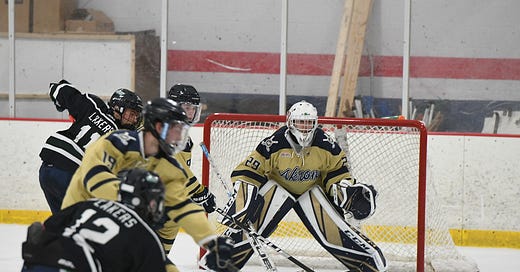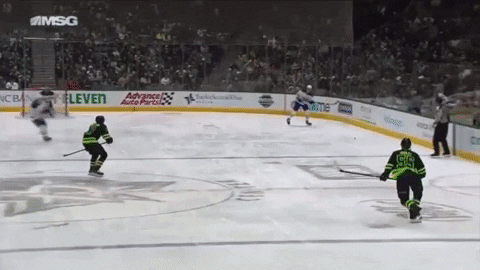When Should Players Play Fast vs. Slow
Finding the right situations and controlling the game's tempo
Controlling the tempo or speed of play is a trait that elite players and teams deploy regularly. Often, the game seems to be played at their chosen pace.
Yet, how do they choose when to play fast vs. play slow?
Playing Fast
Many coaches and players want to “play fast.” The idea behind this overused trope is to make it difficult for opponents to defend when the defenders are out of their structure/no longer have proper positioning.
The ‘playing fast’ team’s goal is to try to play directly up the ice as quickly as possible. Often referred to as playing “north-south.”
This is often off of two common situations:
Off of turnovers
During line changes
Playing Slow
While ‘playing fast’ can certainly a sound strategy, it runs into issues when defenders are into the teeth of their defensive structure. This often requires the offense to play methodically to break down the structure. Think of this as ‘playing slow.”
When the defensive team is more set in their defensive structure and positions, the offensive team’s players are challenged to problem solve and find a way to turn the conditions in their favor.
Two common tactics are to:
Get defenders to commit and move them away from the true attack point
Build speed differentials to quickly slice through the defense
An effective way to play through this is to find ways to get defenders flat-footed. In the example below, we see the Buffalo Sabres send a pass up ice to a player (Jeff Skinner) standing still. The Dallas Stars react and surround Skinner.
The real threat, though, was on the far side of the ice building speed. As Tage Thompson catches the pass, the defending team has no chance to gap up and properly defend. This false gap and late speed is a great way to quickly attack through a set defense.
Playing Fast vs. Play Slow
While the elite players have a better propensity for finding a way to have the game played at the speed they want, all players can understand and practice the basic concept of when to play fast vs. when to play slow.
Analytically Speaking
One area where it’s almost always to best to play fast is off a zone entry. The best chance to score is immediately after an entry (within 2 seconds).
This is a key finding from “Bayesian Space-Time Models for Expected Possession Added Value.”
The team of Tyrel Stokes, Brendan Kumagai, Mikael Nahabedian and Thibaud Châtel won (over 71 others) at the Big Data Cup at the Ottawa Hockey Analytics Conference 2021.
You can check out their entire research that goes beyond just this via their slides (Dropbox) or paper (GitHub).
We also had them on the Hockey IQ Podcast to talk in depth about their findings.
Further Reading - Attack Puck vs. Possession Puck
Did you enjoy this newsletter?
Help us spread the ideas within this newsletter by sharing them with the people you care about






